Solar construction crews added 6.4 GW of rooftop and other small-scale solar across the U.S. last year, according to preliminary data from the U.S. Department of Energy’s Energy Information Administration (EIA). The EIA defines small-scale solar as projects smaller than 1 MW.
The 6.4 GW of installations nationwide exceeded installations of 5.4 GW in 2021 and 4.4 GW in 2020.
Maine added the most small-scale PV relative to its population, adding 132 watts of capacity per person. Next was California at 52 watts per person, followed by Nevada, Rhode Island, New Jersey and Florida, all adding at least 30 watts per person.
Southeast
Thirteen Southeastern states added just over 1 GW of small-scale solar last year, for a 57% gain over the previous year.
Florida led the way, with installations nearly doubling over those in 2021. As in past years, EIA was unable to obtain meaningful data for Alabama and Georgia.
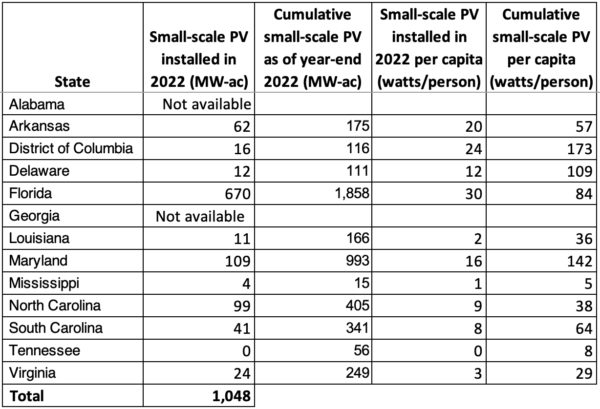
Northeast
Nine Northeastern states added 1.3 GW of small-scale solar last year, for a 25% gain over the previous year.
Six Northeastern states reached an installed base of small-scale PV exceeding 200 watts per person, a milestone otherwise reached by only four states in the sunniest part of the country.
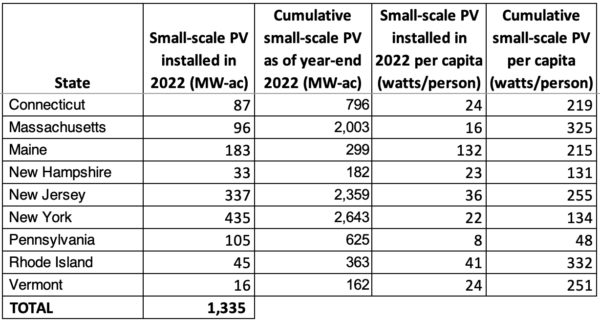
Midwest and Northern Tier
Thirteen states in this region added 675 MW of small-scale solar, representing a 6% decline from 2021.
Oregon led the way by adding 18 watts of small-scale PV per person, overtaking last year’s leaders, Illinois and Idaho.
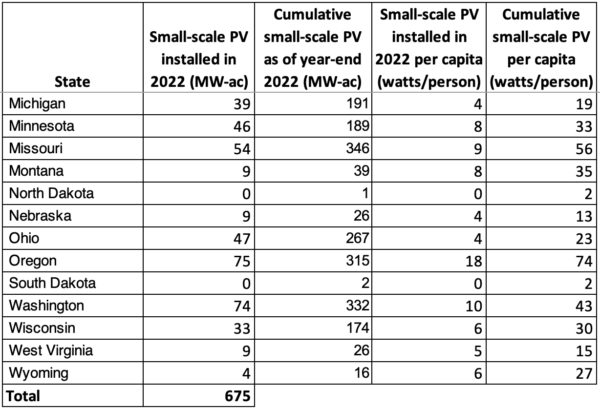
Ten Sunniest States
The ten sunniest states added 3.3 GW of small-scale PV last year, representing a 14% gain over the previous year, and accounting for more than half of the additions nationwide.
Hawaii retains the lead in cumulative small-scale PV per person, at 541 watts per person, followed by California at 364 watts per person.
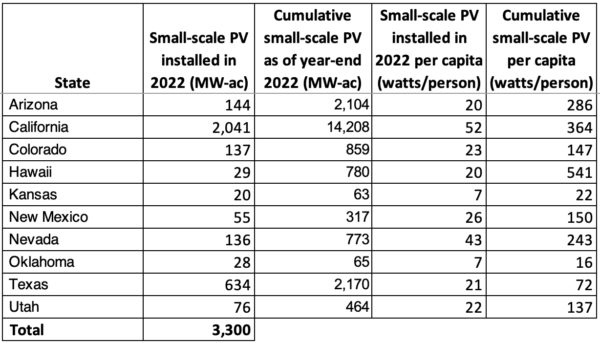
This content is protected by copyright and may not be reused. If you want to cooperate with us and would like to reuse some of our content, please contact: editors@pv-magazine.com.
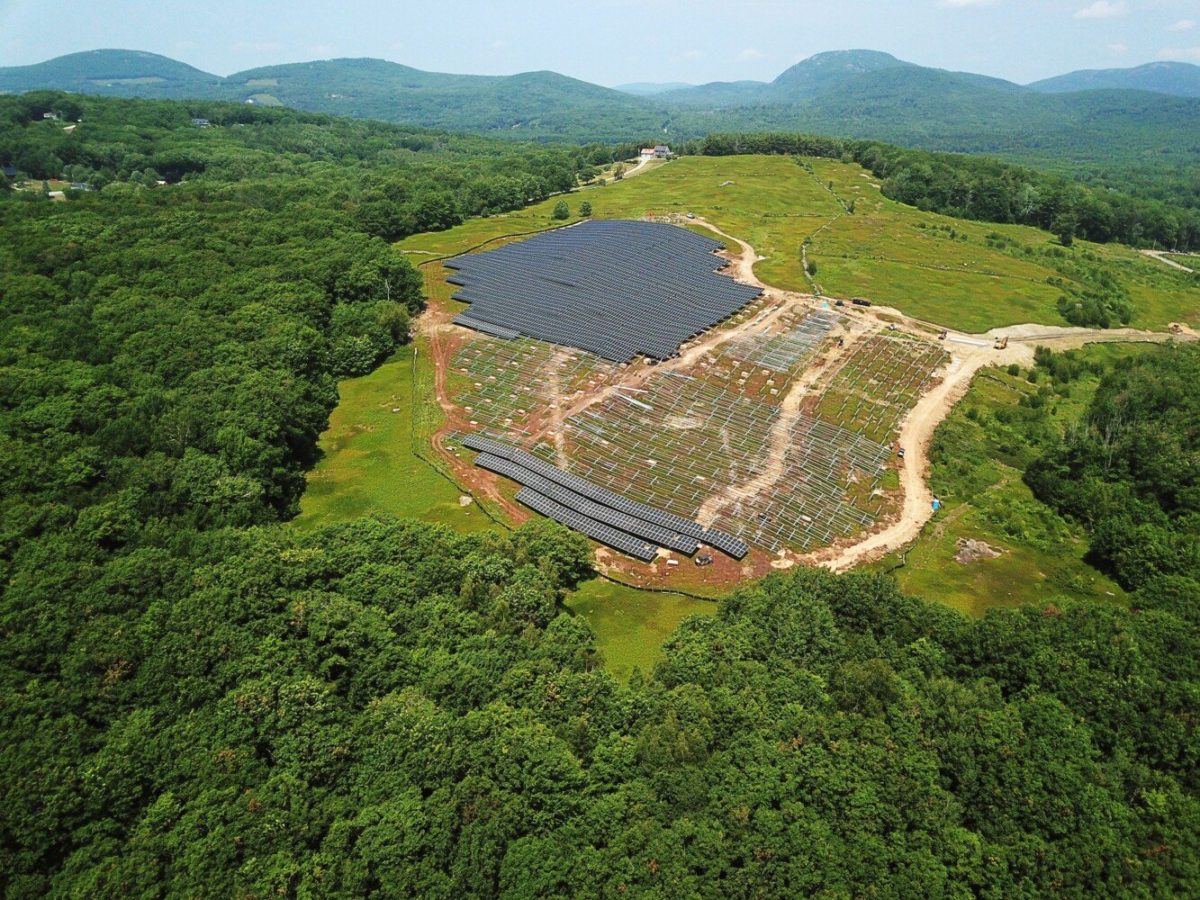







In 2022, Californians were spooked by a CPUC proposed Utility applied monthly fee of $8.00 per kilo watt of installed solar at the beginning of the year and that slowed down the new installations. The modified NEM 3.0, ordered by the CPUC, dropped that charge but is going to take 75% of the energy produced and placed onto the grid, by all new rooftop solar customers, away without compensation after April 14, 2023, and that has spurred installations and grid tied applications to be approved before that date, grandfathering in NEM 2.0. The fact that the CPUC can change the contracts is making everyone think that going off-grid with their systems would be better than being hit with fees and takeaways that could be imposed while they are still trying to pay off their systems. The batteries required almost double the installation costs of new systems leaving out the poor and lower middle class from being able to afford solar at all. California is killing grid tied rooftop solar just as EV charging ramps up. Anyone notice that the biggest buyer of EVs is California and EV sales are down in that state? Rooftop solar = EV adoption with the price of electricity so high in California.